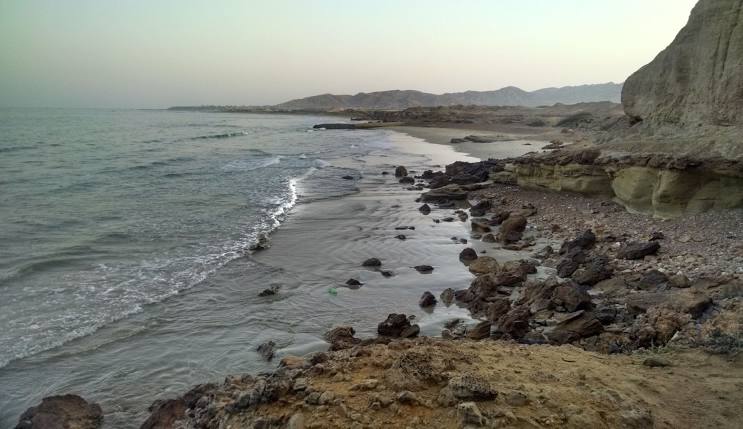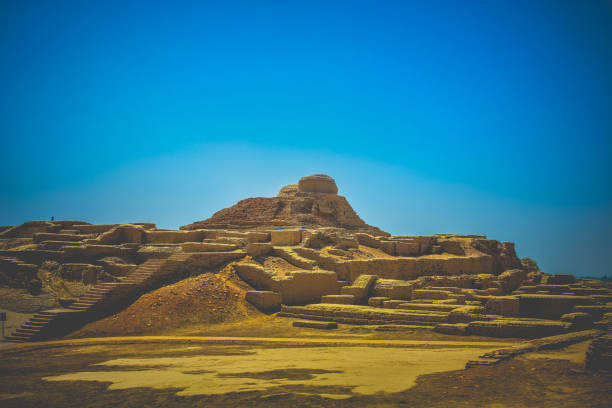
Visiting Mohenjo-Daro is more than just seeing ancient ruins. It’s a chance to dive into the rich culture and traditions of Sindh. By connecting with the local community, you’ll gain a deeper understanding of the region’s heritage.
Discovering Mohenjo-Daro: A Journey Through Time
Mohenjo-Daro, located in the Larkana District of Sindh, Pakistan, showcases the brilliance of the ancient Indus Valley Civilization. This civilization thrived around 2500 BCE. The site is more than just old ruins. It highlights one of the first urban cultures in human history. Mohenjo-Daro stood alongside other great civilizations like those in Egypt and Mesopotamia. The name “Mohenjo-Daro” means “Mound of the Dead.” This name reflects its historical importance and the secrets hidden within its ancient buildings. Moreover, the site tells a story of advanced urban planning and architecture. For instance, its well-organized streets and drainage systems show the people’s ingenuity. Therefore, it is a reminder of their remarkable achievements.
The location of Mohenjo-Daro adds to its historical value. It lies near the Indus River, which supported trade and farming. The fertile land around the city helped grow crops and build strong trade connections with nearby areas. Its position allowed for effective agriculture and easy trade.The city had a grid-like layout, showing advanced planning. For example, its streets were well-organized, and the drainage system was intricate. Today, modern cities admire these features and aim to achieve similar designs.
In 1922, archaeologists rediscovered Mohenjo-Daro. Before this, it had remained hidden for almost 2,000 years. Excavations uncovered important details about the people’s social, cultural, and economic lives. In 1980, UNESCO recognized Mohenjo-Daro as a World Heritage Site. This honor emphasizes its well-preserved structures and its role in shaping urban development in South Asia.
The city’s design shows extraordinary engineering skills. Builders used baked bricks to create straight and structured buildings. These structures served different purposes, such as homes, offices, and marketplaces. Moreover, the presence of public baths and granaries proves the city had an organized civic system. At its height, Mohenjo-Daro likely housed 40,000 people. Also, its drainage and waste systems show how much the residents valued cleanliness.
Artifacts found at the site offer more clues about life in Mohenjo-Daro. For instance, pottery, tools, and seals highlight their craftsmanship and creativity. Among the artifacts, the “Dancing Girl” bronze statue stands out. It shows the artistic skill of the people. These discoveries reveal that Mohenjo-Daro had a rich culture, a well-structured society, and a strong focus on trade and community.
Historical Significance & Geography
Mohenjo-Daro, meaning “Mound of the Dead,” was a key city of the Indus Valley Civilization. This civilization thrived between 3300 BCE and 1300 BCE. Mohenjo-Daro gives us valuable insights into early urban life and social organization. The city stood near the Indus River, which played an essential role in its growth. The river supported trade and agriculture. The fertile land around the city made farming productive. People grew crops efficiently, which helped the economy flourish. With this agricultural success, Mohenjo-Daro established strong trade networks. It traded with neighboring civilizations, such as Mesopotamia and Egypt. This connection shows how ancient societies relied on one another.
In 1922, archaeologist R. D. Banerji rediscovered Mohenjo-Daro. This discovery was crucial for understanding the Indus Valley Civilization. The site uncovered valuable information about urban planning, architecture, and daily life. Excavations revealed advanced construction methods, including organized streets, homes, and public structures like granaries and baths. These findings highlight the society’s high level of development. Experts believe the city once housed 35,000 to 41,250 people. The layout shows impressive civil engineering. For example, it included a complex drainage system and many wells that provided water to residents.
In 1980, UNESCO recognized Mohenjo-Daro as a World Heritage Site. It became the first site in South Asia to earn this honor. This recognition shows its importance for understanding ancient urban planning and social systems. Preservation efforts now focus on protecting the site from erosion and poor restoration practices. These measures ensure that future generations can learn from its legacy. Mohenjo-Daro’s location adds to its historical importance. Today, it sits about 2 miles (3 km) from the Indus River. However, it was originally much closer to the river. This position gave the city easy access to water for farming and daily life. The builders designed the city with floods in mind. They constructed brick embankments to control seasonal flooding. This careful planning shows their skill and creativity.
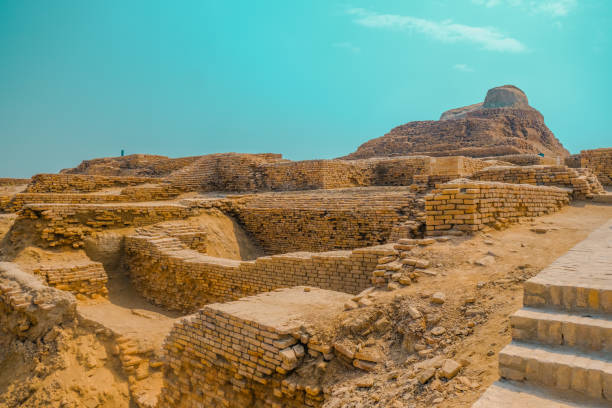
Cultural Identification
Mohenjo-Daro stands out for its remarkable urban planning and architectural brilliance, reflecting the advanced skills of the Indus Valley Civilization. The city’s design follows a well-organized grid pattern, with streets crossing at right angles. This layout creates a structured and efficient environment. It reveals that the society valued order and accessibility in its urban design. The city spans a vast area of about 300 hectares. Builders primarily used fired and mortared bricks for construction, while some structures also included sun-dried mud-bricks and wood, showcasing their versatility with materials.
Mohenjo-Daro’s layout consists of two main parts: the Citadel and the Lower City. The Citadel, raised on a platform, served as the city’s administrative and religious center. It contained important public buildings like the Great Bath. This impressive structure measures 12 meters by 7 meters. Its complex water supply and drainage system demonstrate the engineering expertise of the builders. The Great Bath likely played a key role in rituals, highlighting the culture’s focus on cleanliness and communal activities.
The Lower City of Mohenjo-Daro mainly served as a residential and commercial area. It consisted of closely packed houses, often built with inner courtyards and multiple stories. These homes accommodated families with different layouts, showing social differences in the community. Many houses had special rooms for bathing or storage. Interestingly, some even had underground heating systems, called hypocausts, which might have been used for heated baths. This suggests that the residents enjoyed a high standard of living.
Moreover, Mohenjo-Daro had a remarkable drainage system. Nearly every street had covered drains to carry wastewater away from homes. Each house connected its drainage outlet to this system, preventing waste from collecting in living areas. This demonstrates the people’s advanced understanding of sanitation and health. Furthermore, their focus on hygiene highlights their effort to maintain a clean and healthy environment for everyone. Therefore, the city’s design reflects both practicality and innovation, ensuring comfort and cleanliness for its residents.
Artifacts found at Mohenjo-Daro offer valuable insights into the daily lives and culture of its people. For example, archaeologists have discovered steatite seals, intricately designed pottery, and various tools. These items reflect both artistic creativity and practical use. Many seals have inscriptions in an undeciphered script, suggesting they were used for trade. Furthermore, the presence of standardized weights and measures points to a well-organized economy. This system likely supported trade within the city and with other regions.
In addition, the city’s urban design shows a sense of equality among its residents. Unlike other civilizations of that time, Mohenjo-Daro does not display sharp divisions between social classes in its layout or buildings. Public spaces, like marketplaces, played a central role in daily life and encouraged social interaction. Similarly, shared facilities, such as public baths and granaries, were available to everyone. Therefore, the city’s design highlights a communal lifestyle and a focus on inclusivity.
Logistics
By Air: Mohenjo-Daro has its own airport, making it easy for travelers to reach the site directly. You can find flights from major cities like Karachi. Alternatively, Sukkur Airport is about 70 kilometers away. From there, you can hire a taxi or use private transport to get to the site.
By Road: If you’re traveling by road, Mohenjo-Daro is around 30 kilometers from Larkana. It takes about 30 to 45 minutes to drive from Larkana to the site. Taxis and rickshaws are available in Larkana, so you can easily get a ride. Many tour operators also offer trips with transportation from Karachi and other nearby cities, along with guided tours of the site.
Travel Experience
When planning your trip, consider taking a guided tour to fully understand the importance of Mohenjo-Daro. Many tour companies offer packages that include transportation, guided tours of the site, and visits to nearby spots like the Mohenjo-Daro Museum. These tours help explain the history and architecture, giving you a deeper appreciation of the site’s cultural heritage.
Make sure to set aside enough time to explore the site. Key attractions include the Great Bath, an iconic structure that is thought to have had religious significance. You can also visit residential areas and public buildings, which show the advanced urban planning of the Indus Valley Civilization.
Travel Tips
- Dress Comfortably: Given that you will be walking around an archaeological site, wear comfortable clothing and sturdy shoes suitable for walking on uneven terrain.
- Essentials: Carry essentials such as water, sunscreen, and a hat to protect yourself from the sun during your exploration.
- Respect Conservation Rules: It is crucial to follow conservation guidelines while visiting Mohenjo-Daro. This includes avoiding littering and refraining from touching artifacts to help preserve this ancient heritage.
- Nearby Attractions: Consider exploring other historical landmarks in Larkana or experiencing local Sindhi culture through cuisine and crafts. The Mohenjo-Daro Museum is a must-visit for those interested in learning more about the artifacts discovered at the site.
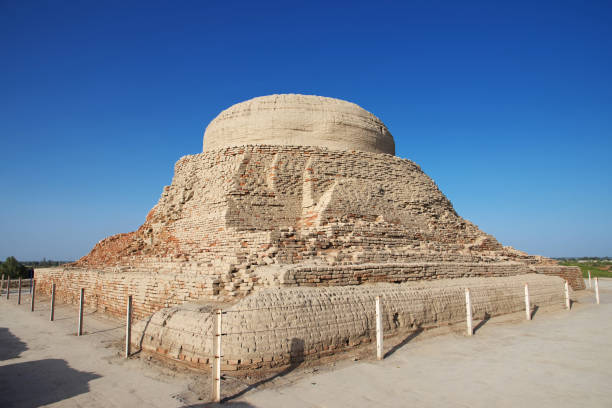
Near by Attractions
- Bhutto Family Mausoleum
The Bhutto Family Mausoleum is a short distance from Mohenjo-Daro. It is the resting place of famous political figures like Zulfikar Ali Bhutto and his daughter Benazir Bhutto. The mausoleum looks like the Taj Mahal, with beautiful tile work and calligraphy. Visitors can walk through the peaceful grounds and think about the political impact of the Bhutto family.
- Shahnawaz Bhutto Public Library
This library is named after Shahnawaz Bhutto, the son of Zulfikar Ali Bhutto. It has a large collection of books and manuscripts. The library is quiet, making it a great place for reading or research. It’s an excellent resource for people interested in learning more about the area’s literature. - Shahi Bagh Royal Gardens
The Shahi Bagh Royal Gardens are perfect for anyone who loves Mughal architecture. These gardens are full of exotic flowers and lush plants. Visitors can enjoy the peaceful environment, away from the city’s hustle and bustle. There’s also a wooden pavilion built by Sir W. Merewether during British rule, blending different cultural influences. - Eid Gah Mosque
The Eid Gah Mosque is one of the main attractions in Larkana. Its design is impressive, and it holds great historical value. Visitors can admire the detailed decorations and the calm atmosphere, making it a great spot to appreciate Islamic architecture. - Ghanta Ghar Chowk Ghanta Ghar Chowk is a busy local hub where people gather to socialize. Street performances often take place here, offering a lively display of local culture and talent. Nearby markets sell local goods, crafts, and food, giving visitors a chance to experience the authentic feel of Larkana.
Cultural Immersion
- Local Food
Sindhi cuisine is full of bold flavors and variety. While in Larkana, make sure to try traditional dishes like Sindhi Biryani, Saag (a spinach dish), and different types of bread, including Sindhi Kebab or Litti. You’ll also find tasty snacks like Samosas and Pakoras at street food stalls, perfect for a quick bite. - Handmade Crafts
Larkana has many talented artisans who create beautiful pottery, textiles, and woodwork. Visit local markets like Dhak Bazaar to find unique handmade items. You can even talk to the artisans to learn about their craft and the culture behind it. - Getting Involved
Joining local festivals or events can make your experience even richer. These events often include music, dance, and traditional performances, showcasing Sindhi culture. By participating, you’ll connect with the locals and better understand their customs and lifestyle.
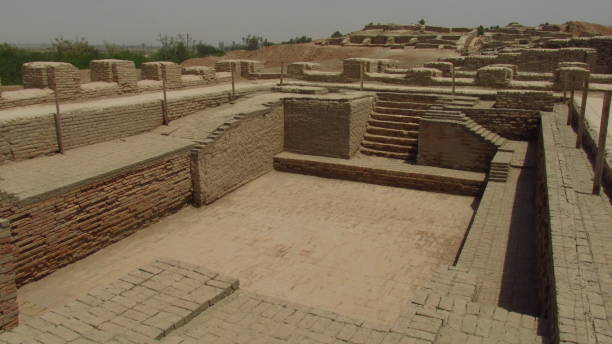
If you plan to visit the ancient site of Mohenjo-Daro, plan your trip carefully to make the most of it. The best time to go is from October to March. During these winter months, the weather stays pleasant and cool. You can explore the site comfortably without dealing with extreme heat. Guided tours also feel more enjoyable in this mild climate.


